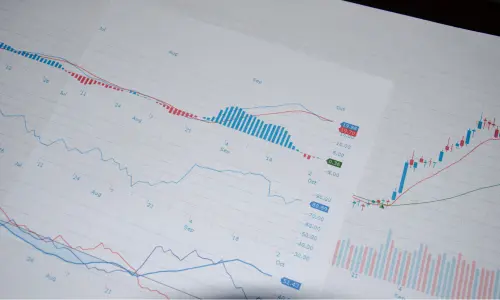Unlocking Profit Potential: Exploring the Value of Wesfarmers Shares in Today’s Market

Are you on the lookout for a lucrative investment opportunity in the ever-evolving stock market landscape? Look no further as we delve into the enticing realm of Wesfarmers shares to uncover their profit potential in today’s market environment. With a keen focus on value and growth, this article will serve as your comprehensive guide to understanding the dynamics at play when considering investing in Wesfarmers.
As we navigate through the intricate web of financial analysis and market trends, we will explore the factors driving the value of Wesfarmers shares, shedding light on the opportunities that await savvy investors. From dissecting market performance indicators to evaluating strategic decisions, we will equip you with the insights needed to make informed investment decisions.
Join us on this insightful journey as we unlock the doors to profit potential and unveil the hidden gems that Wesfarmers shares have to offer in today’s dynamic market setting.
Historical Performance of Wesfarmers Shares
Wesfarmers Limited, an Australian conglomerate, has demonstrated a compelling historical performance in the stock market since its establishment in 1914. Over the decades, the company has evolved from a cooperative focused on agricultural supplies into a diversified entity, encompassing retail, chemicals, and industrial services. This transformation has played a significant role in its share price trajectory, fostering a robust growth pattern particularly notable in the early 2000s when Wesfarmers acquired Coles Group, significantly enhancing its retail footprint and market share. The acquisition was a pivotal moment that not only drove revenue growth but also increased investor confidence, resulting in a steady rise in share prices.
Analyzing the share price trends over the years reveals that Wesfarmers shares have shown resilience, even during economic downturns. For instance, during the global financial crisis of 2008, while many companies saw their stock values plummet, Wesfarmers managed to sustain its performance through strategic cost management and operational efficiencies. This period highlighted the company’s ability to adapt and thrive, which in turn reinforced investor trust. In the years following the crisis, Wesfarmers shares rebounded strongly, reaching new heights as the company continued to optimize its portfolio and capitalize on market opportunities.
More recently, the pandemic-induced market volatility tested the endurance of many companies, yet Wesfarmers showcased its strength. The shift in consumer behavior towards online shopping and essential goods fortified its retail segments, particularly in the hardware and grocery sectors. This adaptability has been reflected in the share price, which has generally trended upwards, indicating a favorable market response to its strategies. As we delve deeper into the factors influencing the current market valuations, it’s crucial to recognize how the historical performance of Wesfarmers shares lays a foundation for future expectations among investors.
Factors Influencing Wesfarmers Share Price
Several key factors influence the share price of Wesfarmers, reflecting both internal decisions and external market conditions. One of the primary drivers is the company’s operational performance across its diverse portfolio, which includes retail chains like Bunnings and Kmart, along with industrial and chemical divisions. The strong performance of these segments, particularly during times of economic resilience, tends to enhance investor confidence, resulting in a positive impact on share prices. Furthermore, the company’s strategic initiatives, such as expanding its e-commerce capabilities and optimizing supply chains, are critical in responding to market demands and maintaining competitive advantages.
Market sentiment also plays a significant role in determining Wesfarmers share price. Investor perceptions can be influenced by macroeconomic indicators such as inflation rates, interest rates, and employment statistics. For instance, a favorable economic outlook can lead to increased consumer spending, positively affecting retailers under the Wesfarmers umbrella. Conversely, negative economic forecasts can dampen investor enthusiasm, leading to fluctuations in share prices. Additionally, broader market trends, including shifts toward sustainable investing and corporate social responsibility, have begun to affect investment decisions. Wesfarmers’ commitment to sustainability initiatives can therefore attract socially conscious investors, further influencing demand for its shares.
Lastly, external factors such as regulatory changes, competitive dynamics, and global market conditions also impact share prices. For example, changes in trade policies or tariffs can affect the cost structure of Wesfarmers’ operations, influencing profitability and, consequently, share valuations. The competitive landscape, particularly in the retail sector, requires continual adaptation and innovation, which may impact market positioning and investor perceptions. As we analyze the financial reports and strategic decisions of Wesfarmers, it will become evident how these factors converge to shape the company’s market performance and share price trajectory.
Analyzing Financial Reports of Wesfarmers
To gain a comprehensive understanding of Wesfarmers’ financial health, analyzing its financial reports is essential. The company’s annual reports provide a wealth of information, including revenue, profit margins, and cash flow metrics that are critical for assessing operational performance. A close look at the latest financial statements reveals consistent revenue growth, driven largely by the retail sector’s robust performance. For example, the most recent quarterly earnings report indicated a significant increase in sales across Bunnings and Kmart, showcasing the company’s ability to capture market share even in a competitive landscape.
Moreover, profitability ratios, such as the return on equity (ROE) and profit margin, are crucial indicators of the company’s efficiency in generating returns for its shareholders. An analysis of these ratios over multiple periods can highlight trends in operational effectiveness and cost management. For instance, a rising ROE suggests that Wesfarmers is effectively utilizing shareholder equity to generate profits, which can be a positive signal for investors. Similarly, an improving profit margin indicates enhanced operational efficiencies and cost control, further solidifying the company’s attractive investment proposition.
In addition to profitability, examining the balance sheet provides insights into Wesfarmers’ financial stability and liquidity. Key metrics such as the debt-to-equity ratio and current ratio help assess the company’s financial leverage and ability to meet short-term obligations. A strong balance sheet with manageable debt levels can instill greater investor confidence, as it reflects the company’s resilience against economic downturns and its capacity for future growth. By synthesizing these financial indicators, investors can formulate a well-rounded view of Wesfarmers’ profitability potential and overall financial health, aiding in informed decision-making regarding share investments.
Investment Strategies for Wesfarmers Shares
When considering investment strategies for Wesfarmers shares, it is essential to align them with individual financial goals and risk tolerance. One common approach is a long-term investment strategy, which focuses on the fundamental strengths of the company. Given Wesfarmers’ historical resilience and robust market presence, a buy-and-hold strategy can be particularly effective. Investors adopting this strategy may benefit from capital appreciation as the company continues to expand its market share and enhance operational efficiencies over time. Additionally, reinvesting dividends received from Wesfarmers shares can compound returns, further increasing overall wealth.
Another viable strategy is to employ a dollar-cost averaging approach. This involves investing a fixed amount in Wesfarmers shares at regular intervals, regardless of market conditions. This method can minimize the impact of market volatility by averaging purchase costs over time. For investors who are concerned about timing the market, dollar-cost averaging provides a disciplined approach, reducing the emotional aspect of investing. It allows investors to build a position in Wesfarmers gradually, taking advantage of price fluctuations while mitigating the risk associated with lump-sum investments.
Furthermore, for those with a more active trading mindset, a short-term trading strategy may be suitable. This involves capitalizing on market trends and price movements through technical analysis. Traders often focus on chart patterns, volume trends, and market sentiment to make quick buy or sell decisions. However, this approach requires a keen understanding of market dynamics and can involve higher risks. Regardless of the strategy chosen, thorough research and continuous monitoring of market conditions are vital in ensuring that investment decisions remain aligned with Wesfarmers’ evolving business landscape and economic factors.
Risks Associated with Investing in Wesfarmers Shares
Investing in any stock, including Wesfarmers shares, entails inherent risks that potential investors must consider. One of the primary risks is market volatility, which can significantly impact share prices. Economic downturns, shifts in consumer behavior, and unforeseen global events can lead to fluctuations in demand for the products and services offered by Wesfarmers. For instance, during a recession, consumers may tighten their budgets, affecting sales in retail segments and subsequently impacting share valuations. Investors need to be prepared for this volatility and assess their risk tolerance accordingly.
Another risk factor is the competitive landscape within the retail sector. Wesfarmers operates in a highly competitive environment, with numerous players vying for market share. Competitors may implement aggressive pricing strategies, innovative marketing campaigns, or technological advancements that could affect Wesfarmers’ market position. If competitors capture a larger share of the market, it could hinder Wesfarmers’ growth potential and put downward pressure on its share price. Investors must remain vigilant about industry trends and competitive dynamics to better understand the potential risks involved.
Finally, regulatory changes can pose risks to Wesfarmers’ operations. Changes in government policies, such as labor laws, environmental regulations, or trade agreements, can impact operational costs and profitability. For instance, stricter environmental regulations may require additional compliance costs, affecting the bottom line. Investors should stay informed about potential regulatory developments that could influence the company’s operations and financial performance. By understanding these risks, investors can make more informed decisions and strategically position themselves when considering an investment in Wesfarmers shares.
Expert Opinions on Wesfarmers Shares
Expert opinions provide valuable insights into the investment landscape surrounding Wesfarmers shares. Analysts often highlight the company’s strong fundamentals, emphasizing its diversified business model as a significant strength. The ability to generate revenue across various sectors, including retail and industrial services, is frequently cited as a buffer against economic fluctuations. Many experts believe that Wesfarmers’ focus on operational efficiency and cost management positions it well for sustained growth, making it an attractive option for long-term investors seeking stability and reliable returns.
Moreover, expert analyses often delve into the company’s strategic initiatives, particularly its emphasis on e-commerce and digital transformation. As consumer preferences shift towards online shopping, analysts recognize Wesfarmers’ proactive approach to expanding its online presence, particularly through Bunnings and Kmart. This shift is seen as essential for maintaining competitiveness in a rapidly evolving retail landscape. Experts posit that successful execution of these strategies can bolster revenue growth and enhance market positioning, ultimately benefiting shareholders.
However, experts also caution investors about potential risks associated with investing in Wesfarmers shares. Concerns regarding market competition and regulatory challenges are frequently discussed in expert commentary. Analysts advise that while the company has strong fundamentals, investors should remain aware of the broader market dynamics and be prepared for potential disruptions that could impact profitability. By considering a range of expert opinions, investors can gain a nuanced perspective on Wesfarmers shares, aiding in the formulation of informed investment strategies.
Comparing Wesfarmers Shares to Competitors
To fully appreciate the value of Wesfarmers shares, it is essential to compare the company’s performance with its key competitors in the market. One prominent competitor is Scentre Group, which operates shopping centers predominantly in Australia and New Zealand. While Wesfarmers has a diversified portfolio, Scentre Group focuses mainly on retail property development and management. This difference in business models presents unique advantages and challenges for each company. For investors, understanding these distinctions can provide deeper insights into potential risks and returns associated with investing in either company.
Another direct competitor is Coles Group, which has a significant presence in the grocery retail sector. The competition between Wesfarmers and Coles is particularly relevant given Wesfarmers’ ownership of the Coles brand until its spin-off in 2018. Since then, both companies have pursued different growth strategies, with Wesfarmers focusing on expanding its hardware and home improvement segments through Bunnings. Comparing their financial performances, market share, and growth strategies can provide investors with a clearer picture of Wesfarmers’ competitive positioning within the retail landscape.
Furthermore, comparing Wesfarmers shares with international competitors, such as Walmart and Home Depot, offers additional context. These corporations operate on a larger global scale and have substantial resources at their disposal. Understanding how Wesfarmers’ growth and innovation strategies stack up against these international giants can help investors gauge its potential for scalability and market expansion. By analyzing these comparisons, investors can better assess the attractiveness of Wesfarmers shares relative to its competitors, leading to more informed investment decisions.
Future Outlook for Wesfarmers Shares
The future outlook for Wesfarmers shares appears promising, bolstered by several strategic initiatives and market trends. As the company continues to diversify its offerings and adapt to changing consumer behaviors, analysts project steady growth in revenue and profitability. The ongoing investment in e-commerce and digital platforms is likely to enhance customer engagement and drive sales across its retail divisions. With the increasing reliance on online shopping, Wesfarmers is well-positioned to capitalize on this trend and maintain its competitive edge in the retail market.
Additionally, Wesfarmers’ commitment to sustainability and corporate social responsibility is expected to resonate positively with investors. As environmental concerns gain prominence, companies that prioritize sustainable practices often attract socially responsible investments. Wesfarmers has made significant strides in this area, implementing initiatives aimed at reducing its carbon footprint and promoting responsible sourcing. This focus on sustainability not only aligns with consumer preferences but also enhances the company’s reputation, potentially attracting a broader investor base.
However, the company must remain vigilant in navigating potential challenges, such as economic downturns and competitive pressures. Continuous monitoring of market dynamics, consumer trends, and regulatory changes will be crucial for sustaining growth. By staying agile and responsive to evolving market conditions, Wesfarmers can continue to unlock its profit potential and deliver value to shareholders. Overall, the future outlook for Wesfarmers shares remains optimistic, with the company poised to leverage its strengths and seize opportunities in a dynamic market environment.
Conclusion and Recommendations
In conclusion, investing in Wesfarmers shares presents a compelling opportunity for those looking to capitalize on a robust and diversified company in the Australian market. With a strong historical performance, resilient operational strategies, and a clear focus on e-commerce and sustainability, Wesfarmers has positioned itself well for future growth. Investors should consider the various factors influencing share prices, including market sentiment and competitive dynamics, to make informed investment decisions.
For those interested in a stable, long-term investment, adopting a buy-and-hold strategy may be advantageous. Investors can also explore dollar-cost averaging to mitigate risks associated with market volatility. Meanwhile, those inclined towards active trading should remain attentive to market trends and technical indicators that may influence share price movements. Regardless of the approach, ongoing research and monitoring of financial reports will be essential for optimizing investment outcomes.
Ultimately, while there are inherent risks associated with investing in Wesfarmers shares, the company’s strong fundamentals and strategic initiatives provide a solid foundation for potential growth. By carefully weighing these factors and considering expert opinions, investors can make informed choices that align with their financial goals. As the market continues to evolve, staying abreast of developments in Wesfarmers’ operations and the broader economic landscape will be key to unlocking the profit potential that this notable company has to offer.










